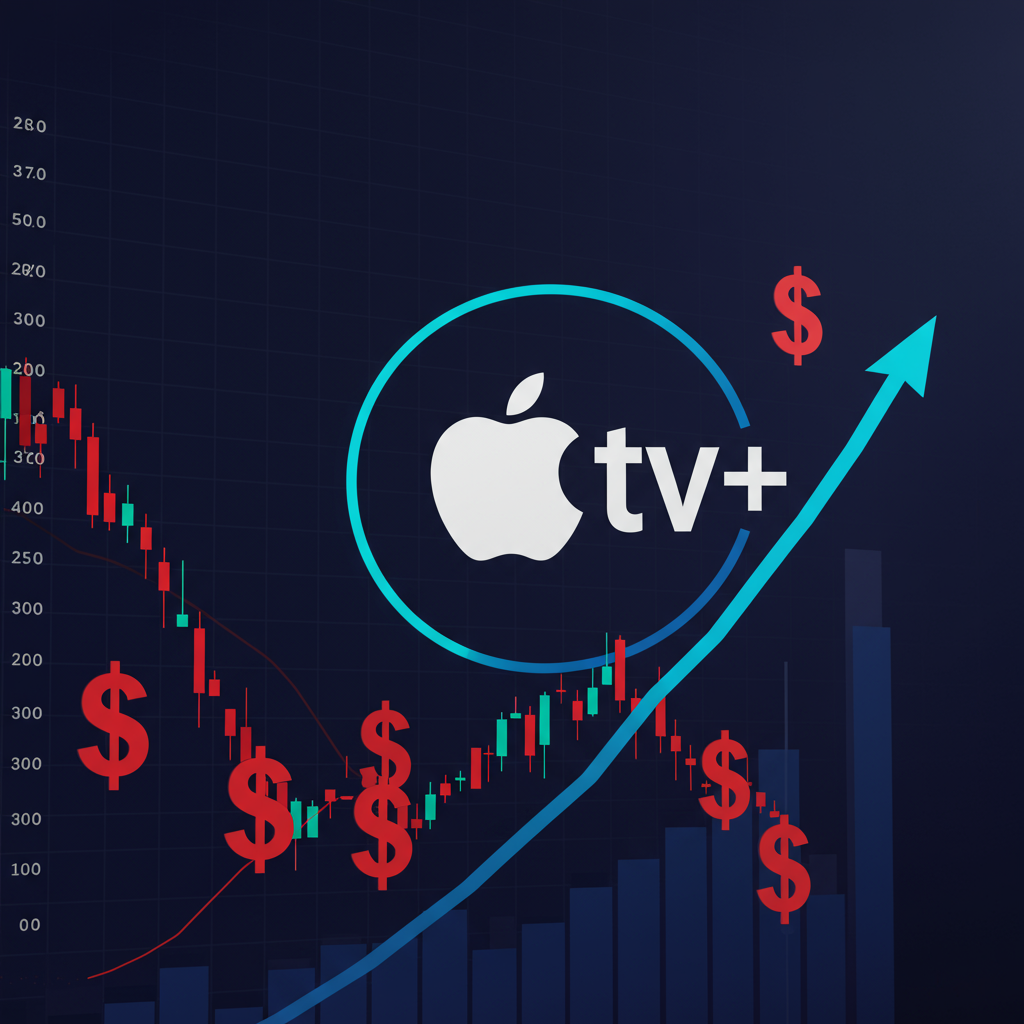The streaming landscape is constantly evolving, and today, subscribers are facing another significant shift. Apple has announced a price increase for its Apple TV+ streaming service, impacting U.S. customers and select international markets. This change means a higher monthly fee for accessing critically acclaimed original content, signaling a broader industry trend towards adjusting subscription rates. For consumers, understanding these new costs and exploring options to mitigate the impact is more crucial than ever.
The New Apple TV+ Pricing Structure
Effective soon, the monthly subscription cost for Apple TV+ will see a notable jump. The previous monthly rate of $9.99 is increasing to $12.99, representing a 30% hike. This $3 increment means subscribers will need to adjust their budgets for Apple’s premium content offering.
For new subscribers, this updated pricing takes effect on August 21. Existing customers, however, will experience the change approximately 30 days after their next service renewal date. It’s important to note that while the monthly fee is rising, the annual cost for Apple TV+ will remain at $99.99. This provides a significant opportunity for savings, which we will explore further.
A Pattern of Price Adjustments: Apple TV+ History
This latest adjustment marks a continuation of a trend for Apple TV+. The service originally launched in November 2019 at an attractive $4.99 per month. Since then, its price has steadily climbed. It first rose to $6.99 in 2022, then to $9.99 in October 2023, and now to $12.99. This means the service has seen three price increases in approximately three years, a clear indication of Apple’s strategy to re-evaluate its offering and pricing in a competitive market.
Why the Price Hike? Unpacking Apple’s Justification
Understanding the reasons behind this Apple TV+ cost hike requires looking at both Apple’s official stance and broader industry dynamics. Companies rarely raise prices without justification, and Apple is no different, citing specific factors for this decision.
Expanding Content Library and Ad-Free Promise
Apple justifies the increase by highlighting the substantial growth of its content library and its commitment to an uninterrupted, ad-free viewing experience. Since its launch, Apple TV+ has accumulated a “deep library of hundreds of Apple Originals,” offering “thousands of hours of premium programming across genres.” New releases are added weekly, continually enriching the platform.
The company emphasizes that Apple TV+ remains the only major streaming service that does not offer a price-reduced ad-supported plan. This stance on an ad-free model is presented as a premium feature, deserving of a higher subscription fee. Recent and upcoming acclaimed programming includes:
Season 4 of “The Morning Show” (September 17)
Season 5 of “Slow Horses” (September 24)
Vince Gilligan’s “Pluribus” (November 7)
Original films like “Highest 2 Lowest” (September 5) and “The Lost Bus” (October 3)
Critically celebrated shows such as “Severance” and Seth Rogen’s “The Studio,” both garnering numerous Emmy nominations.
Beyond dramas and comedies, Apple TV+ also hosts a range of kids’ programming, including new and classic Peanuts specials, and live sports content like MLB’s “Friday Night Baseball” and Major League Soccer matches. This diverse and expanding catalog supports Apple’s claim of offering significant value.
The Financial Reality: A Money-Losing Service?
Despite its rich content offering, reports suggest that Apple TV+ has faced financial challenges. A March 2025 report by The Information indicated that Apple TV+ was reportedly losing more than $1 billion annually, with its spending on premium content significantly exceeding revenue. Apple has not publicly commented on these reports, and specific financial results for the service are not publicly disclosed.
Furthermore, Apple has reportedly scaled back its annual spending on original content, decreasing it from a previous $5 billion to $4.5 billion. While still a massive investment, this adjustment, coupled with the consistent price increases, suggests an ongoing effort to offset these reported financial losses and move towards profitability. With an estimated subscriber base of around 40-45 million, Apple TV+ still significantly trails competitors like Netflix, which boasts over 300 million subscribers. This competitive gap likely contributes to the pressure to increase revenue per user.
The Broader Streaming Landscape: An Industry Trend
Apple’s decision to raise its subscription fee is not an isolated event. It aligns with a broader trend across the streaming industry. Several other major platforms have also adjusted their pricing upwards recently, signaling a shift in how streaming services approach profitability and sustainability.
Earlier this year, both Netflix and NBCUniversal’s Peacock streaming service increased their prices. Netflix boosted the cost of its standard plan with ads from $6.99 to $7.99 a month in January. Peacock, in July, raised its Premium Plus plan by $3 to $16.99 per month. Beyond these, services like Hulu, Disney Plus, and Max all implemented price hikes in the previous year. This widespread strategy suggests that streaming providers are collectively re-evaluating their business models, seeking to improve profitability in a saturated and highly competitive market. As Mike Rose, an affiliate revenue reporter for cleveland.com, observed, Apple appears to be “following the trend we’ve seen in most other streaming services recently.”
Smart Strategies to Navigate the Apple TV+ Price Increase
For existing and potential subscribers, the Apple TV+ price increase naturally raises questions about value and affordability. Fortunately, there are several actionable strategies to consider, allowing users to either mitigate the higher costs or avoid them altogether.
Lock in Savings with an Annual Subscription
The most immediate and significant way to save money is to opt for an annual subscription. While the monthly rate is increasing, the annual cost for Apple TV+ remains unchanged at $99.99. This offers substantial savings compared to the new monthly price. At $12.99 per month, a yearly subscription would cost $155.88. By paying annually, subscribers save over 55% ($55.88) compared to paying month-to-month at the new rate. This strategy translates across regions, offering similar benefits in the UK (£89.99 annually vs. £9.99 new monthly) and Australia (AU$129.99 annually vs. AU$15.99 new monthly).
Maximize Value with Apple One Bundles
For those who use multiple Apple services, the Apple One bundles present an excellent opportunity. These bundles combine Apple TV+ with other popular services like Apple Music, Apple Arcade, and iCloud+ storage. Crucially, the pricing for these bundles has not been affected by the Apple TV+ individual price hike.
Apple One is available in three tiers:
Individual: Includes Apple Music, Apple TV+, Apple Arcade, and 50GB iCloud+ storage.
Family: Offers the same services with more iCloud+ storage (200GB) and can be shared among up to five people.
Premium: Adds Apple News+, Apple Fitness+, and 2TB iCloud+ storage.
Starting at $19.95 per month in the U.S., these bundles can offer significant savings compared to subscribing to each service individually, especially if you already use several Apple offerings.
Leverage Free Trials and Special Offers
New and select returning customers can still take advantage of free trials. The standard offer typically provides a seven-day free trial. However, extended trial periods are often available:
One month free for students or new Apple One subscribers.
Three months free with the purchase of a new Apple device.
- Specific regional promotions, such as three months free with a Roku device purchase or six months with a T-Mobile Go5G plan in the U.S., or similar deals through EE iPhone contracts and Three bundles in the UK.
- www.cbsnews.com
- variety.com
- www.cleveland.com
- www.techradar.com
- nypost.com
These trials allow users to explore the expanded content library before committing to the higher subscription cost.
Looking Ahead: The Potential for an Ad-Supported Tier
While Apple TV+ currently maintains an ad-free model, the streaming landscape suggests a potential future shift. Reports indicate that Apple has been actively exploring the advertising space, recruiting ad executives and testing ad tools. The author of a TechRadar article on avoiding the price hike even suggests that an ad-supported tier could be a natural progression.
Competitors like Netflix, Disney+, and Prime Video have already successfully implemented ad-supported tiers, leading to increased subscriber sign-ups. With Apple’s continued investment in expensive “big-ticket productions” and costly sporting rights, an ad-supported tier could bolster its bottom line and offer a lower-cost entry point for viewers. If the recent price hike negatively impacts subscriber numbers, Apple TV+ will likely launch such a tier to attract and retain viewers, providing another option for budget-conscious streamers.
Frequently Asked Questions
What is the new monthly cost for Apple TV+ and when does it take effect?
The new monthly cost for an Apple TV+ subscription is $12.99, an increase from the previous $9.99. For new subscribers, this price takes effect on August 21. Existing customers will see the change reflected in their billing cycle approximately 30 days after their next service renewal date. It’s important to note that the annual subscription price remains unchanged at $99.99.
How can I save money on my Apple TV+ subscription despite the price increase?
There are several key strategies to save money. The most impactful is to switch to an annual subscription, which costs $99.99 per year, saving you over 55% compared to paying the new monthly rate. Additionally, consider Apple One bundles, which combine Apple TV+ with other Apple services at an unaffected price, offering better overall value if you use multiple services. Lastly, leverage free trials (standard 7 days, or extended offers with new Apple devices or specific carriers) to experience the content before committing.
Why is Apple TV+ raising its prices again, and how does this compare to other streaming services?
Apple TV+ is raising its prices to reflect its expanding library of hundreds of original titles and thousands of hours of premium, ad-free programming. The company also aims to offset reported financial losses, with sources indicating Apple TV+ has been losing over $1 billion annually. This move aligns with a broader industry trend, as several major streaming services like Netflix, Peacock, Hulu, Disney+, and Max have also increased their subscription rates recently, signaling a collective effort to improve profitability in a competitive market.
Conclusion
The latest Apple TV+ price increase to $12.99 monthly is a significant development for subscribers, reflecting both Apple’s ongoing investment in premium, ad-free content and the wider economic pressures within the streaming industry. While the new monthly rate marks a considerable jump, options like the stable annual subscription, value-packed Apple One bundles, and various free trial opportunities provide pathways for users to continue enjoying Apple’s acclaimed originals without a proportional hit to their wallets. As the streaming market continues to mature, consumers will increasingly need to be strategic about their subscriptions. Staying informed about these changes and proactively seeking out the best value will be key to navigating the evolving landscape of digital entertainment.




